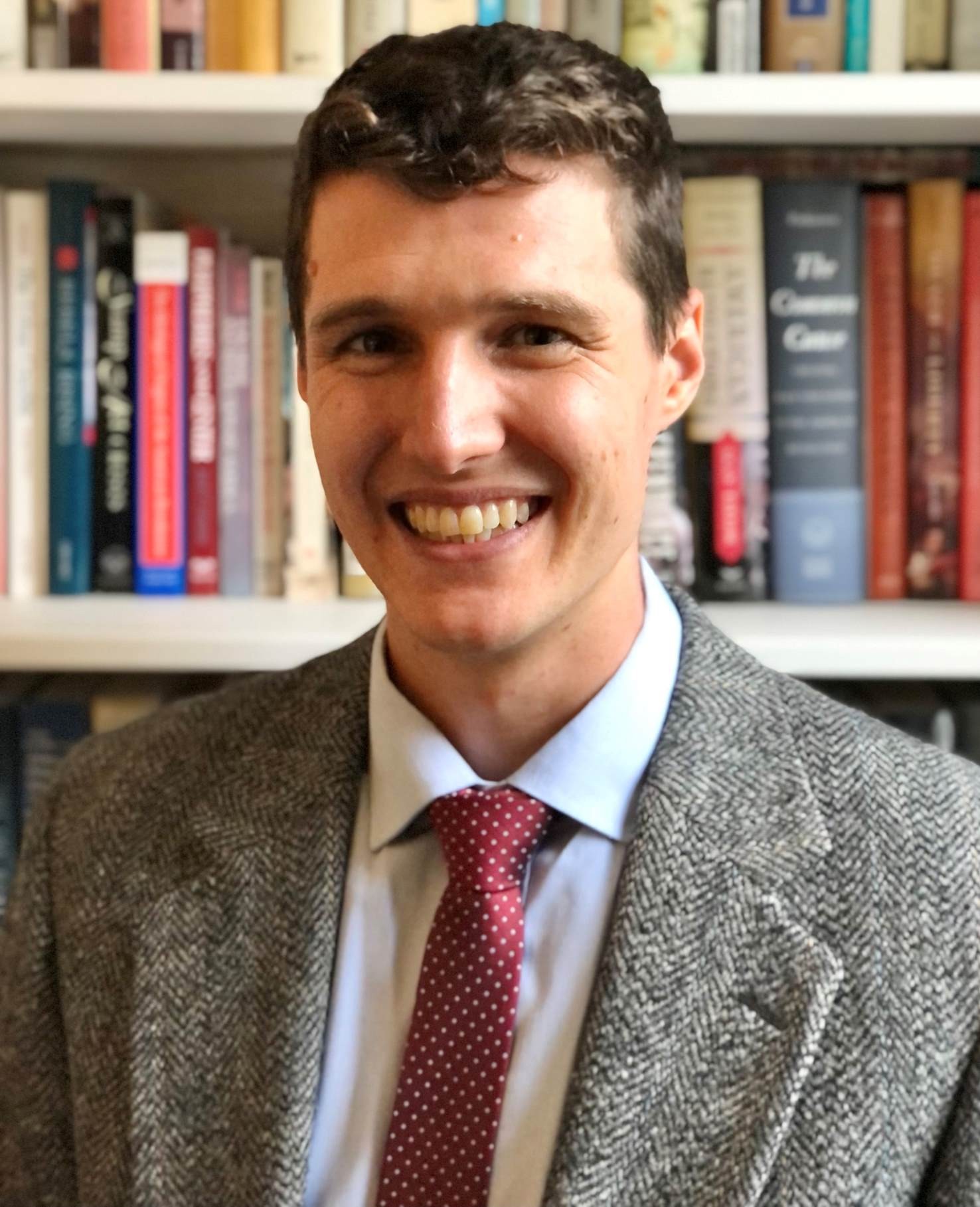David Center for the American Revolution Seminar: "From Jamaica with Reform: Sir Henry Moore’s “Reformation” and the Coming of the Revolution in New York, 1765-1775" with Dillion Streifeneder

The sixth 2023-2024 David Center for the American Revolution Seminar will take place March 6, 2024 at 3:00 p.m. ET on Zoom.
The speaker will be Dillon Streifeneder. Dillion is a historian of colonial America and the early American republic. His current project focuses on state formation and governance in New York during the era of the American Revolution. Streifeneder received his PhD from the Ohio State University. He has taught at the State University of New York (SUNY) at New Paltz, and is currently a History Instructor at the Millbrook School in the Hudson Valley.
Dillon will be presenting is paper titled "From Jamaica with Reform: Sir Henry Moore’s “Reformation” and the Coming of the Revolution in New York, 1765-1775" A description of the paper is below. The paper will be pre-circulated to registered participants in advance of the seminar meeting.
To attend the seminar and to receive a copy of the paper, please register via Zoom.
The David Center for the American Revolution Seminar serves as a forum for works-in-progress that explore topics in the era of the American Revolution (1750-1820). Questions about the series may be directed to Adrianna Link, Head of Scholarly Programs, at [email protected].
NOTE: Seminars are designed as spaces for sharing ideas and works still in-progress. For this reason, this event will not be recorded.
After ten tempestuous weeks at sea, Sir Henry Moore, the newly appointed Governor of the British colony of New York, arrived in New York’s harbor in the early hours of November 13, 1765. Moore quietly slipped ashore unnoticed, and without a guide or escort, made his way to Fort George where Cadwallader Colden – the acting Governor – sheltered, besieged by the Sons of Liberty. As Colden already knew, and Sir Henry Moore soon learned, the Government of the Province of New York was fragile and on the verge of failure.
In New York and elsewhere in British North America, the actual authority and power to govern was situated in the “colonial state.” Initially governing beachhead settlements of small communities, changing demographics along with substantial geographic and population growth during the mid-eighteenth-century strained the ability of many of the colonial states to provide effective governance. This was especially so in New York, where numerous contemporaries came to describe the colonial state as unequivocally weak.
Regarding his own assumptions about the state of government prior to his arrival, Moore wrote to England that “I am extremely sorry to find myself so disappointed in the flattering expectations I had formed of the affairs in this Country. This was not the first, nor the last, of the complaints British officials in the metropole received from royal representatives in the colonies commenting on the difficulties of governing in North America; yet Moore was not deterred. Arriving in New York amid the Stamp Act crisis, Governor Henry Moore attempted to enact a series of sweeping reforms. A confident agent of Empire and energetic imperial fixer, Governor Moore came to New York ready to vigorously improve the province as directed in his instructions from the King, much as he had done during his tenure as Governor of Jamaica. As he recalled in 1767, upon his arrival he “found the hands of Government so weak and determined as soon as it was in my power to being a Reformation in many articles.” Just as he had done in Jamaica, Moore set to work with energy and ability to enact his “Reformation.”
This paper examines Moore’s “Reformation” –the program of reform ushered in between 1765 and 1769 that had outsized repercussions on New York and its trajectory toward Revolution. During Moore’s tenure, he recognized and attempted to fix a host of problems that beset the colonial state and New York’s society. Drawing on his experience in Jamaica, Moore worked tirelessly to “give strength to the Government,” an endeavor that had escaped his predecessors. Yet – as this paper demonstrates – it was his very efforts to strengthen and centralize the government and reform governance that played a decisive role in further destabilizing the colonial state on the eve of the American Revolution.
Overall, his reforms failed, and further destabilized the colonial state and the lives of thousands of New Yorkers. Adding to the growing problems associated with the wider Imperial Crisis, Moore’s reforms left New Yorkers highly susceptible to revolutionary rhetoric as well as bouts of explosive internal violence. Embodying the traits of a “fragile” or “failed” state, the colonial state in New York gradually collapsed between 1774 and 1776, leaving a power vacuum into which the highly active local committees emerged, bringing with them the revolutionary movement.
Note on Paper’s Relation to Larger Work: This paper is derived from a chapter in a book manuscript on state formation in revolutionary New York tentatively titled “Leviathan in the Making: State Formation in New York, 1744- Dillon L. Streifeneder, Proposal for David Center for the American Revolution Seminar, 2023- 2024 1795.” It stands as the final chapter of “Part 1” (currently consisting of 3 chapters) that covers the colonial period from roughly 1744-1775.
